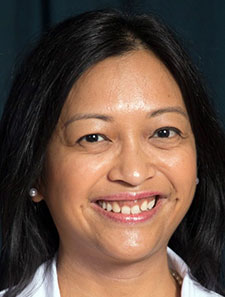Beta-Blocker Interruption or Continuation after Myocardial Infarction
Clinical question: Is the interrupted use of a beta-blocker non-inferior to its continued use in patients with a history of myocardial infarction (MI)?
Background: Patients with MI are often started on a beta-blocker as part of goal-directed medical therapy to decrease morbidity and mortality. Guidelines from the American College of Cardiology and the American Heart Association recommend stopping the use of a beta-blocker after one year if a patient has a preserved ejection fraction. However, the ideal length of treatment with beta-blockers post-MI remains unclear.
Study design: Multi-center, prospective, open-label, randomized, blinded-endpoint, non-inferiority trial
Setting: 49 clinical sites in France
Synopsis: In the ABYSS (Assessment of Beta-Blocker Interruption 1 Year after an Uncomplicated Myocardial Infarction on Safety and Symptomatic Cardiac Events Requiring Hospitalization) trial, 3,700 patients with a history of myocardial infarction, a preserved left ventricular ejection fraction (at least 40%), on long-term beta-blocker medication for the primary indication of myocardial infarction (and not for arrhythmia, uncontrolled hypertension, or migraine), and who did not have a more recent cardiovascular event within the six months prior to enrollment, were randomly assigned to receive beta-blocker treatment continuously or in an interrupted fashion. Those assigned to the beta-blocker interrupted use cohort could have their beta-blocker dose tapered off. Cross-over from one cohort to another occurred in 5.7% of patients, more frequently in the interruption group. Patients were followed up at six months, one year, and annually thereafter, for up to three years. 95% of these patients had undergone coronary revascularization. Results showed that the interrupted use of beta-blockers was not non-inferior to its continuation with regard to the study’s end points of death, myocardial infarction, stroke, or hospitalization for cardiac reasons. There was no change in the quality of life for patients who had beta-blocker use interrupted. Interruption of long-term beta-blocker treatment in patients with a history of myocardial infarction and preserved left ventricular function was not non-inferior to the continuation of beta-blocker treatment.
Bottom line: Hospitalists should continue to follow the American Academy of Cardiology guidelines regarding beta-blocker use in patients with a history of MI. For appropriate patients one year after having an MI and without a history of congestive heart failure, an ejection fraction of less than 40%, and/or another indication to be kept on beta-blockers (such as arrhythmias), beta-blocker use discontinuation did not improve patients’ quality of life or change other end points.
Citation: Silvain J, et al. Beta-blocker interruption or continuation after myocardial infarction. N Engl J Med. 2024;391(14):1277-1286. doi:10.1056/NEJMoa2404204.
 Dr. Ally is a hospitalist in the division of hospital medicine at UC San Diego Health, and a clinical professor in the department of medicine at UC San Diego Health at the University of California in San Diego.
Dr. Ally is a hospitalist in the division of hospital medicine at UC San Diego Health, and a clinical professor in the department of medicine at UC San Diego Health at the University of California in San Diego.